Southern Patagonia 2019/20 season
overview
By Rolando Garibotti
- Climate
- Torres del Paine
- Chalten Massif
- Aysén Region
- Palena Region
- Accidents & responsibility
- Further reading: risk managment
This was the fourth consecutive season with fairly poor weather and conditions. After several anomalously dry seasons in a row, when succeeding in this area was quite straight forward, it has come as a bit of a shock to go back to the Patagonia weather of old. The only extended windows of good weather were in February, but the conditions were challenging, with much snow, ice, and rime on the walls.
Not enough is known about the area's climate to know if the recent changes relate to inter-annual, or decadal variability. Panos Athanasiadis, a climber and climatologist points out that “it is perfectly normal that multi-annual climate variations are very strong, and periods of one extreme are followed by years of the opposite extreme”.
A recently published paper in the journal Nature shows that the poleward trend of the Jet Stream and the ring of low pressures that circle Antartica (defined by a positive AAO index), the two biggest influences in the area's weather, paused around the year 2000. This poleward trend implied drier, more stable weather. The authors attribute this to the healing of the ozone hole, as a result of the Montreal protocol, the treaty designed to phase out the production of substances responsible for ozone depletion. Long term, climate models predict that increasing greenhouse gases will continue the poleward pull, but as this paper suggests, for some time the effect will be dampened by the ozone hole recovery.
In the Torres del Paine Massif, Sebastian Pelletti (AU) y Cristobal Vielma Sepulveda (CL) opened “Despierta y Lucha”, a 400 meter line on the west face of Cerro Peineta, to the left of “Capicúa Pastor”. The red colored granite is of superb quality, with long clean corners, finger to fist cracks, and a couple of difficult slab sections to connect one crack system to the next. They found difficulties to 5.11 and A1, climbing mostly free, with a few short sections of aid, some thin, requiring pitons and micro-nuts. They rappelled “Billy the Kid” (Garber-Lloyd 1993), leaving their line completely clean.
Later in the season, Pelletti and Javier Reyes (CL) climbed “El Tambor” (230m 5.10+), a new route on the west face of the Colmillo Oeste, a smaller formation north of Cerro Catedral. They reached the base via the Valle del Francés and the “gully of the Irishmen”, which leads to the col north of Aguja de los Quirquinchos, on the eastern edge of Glaciar de los Perros, one of the most remote areas of the massif.
In late February, Christophe Ogier (FR) and Gašper Pintar (SI) did the fifth ascent of the “W” traverse of the three Paine Towers, starting at the col Bich they climbed the “Monzino” on Torre Norte, then the “Bonington-Whillans” on Torre Central, rappelled the “Kearney-Knight”, to then climb the “Aste” on Torre Sur. They bivied twice, at the 14th pitch of the “Bonington” (good bivy ledge) and in a small ledge on the east side of the col below the north ridge of Torre Sur. Eighteen years ago, in February of 2002, Steve Schneider (US) did the first ascent of this traverse, solo, completing it in 51 hours round trip from basecamp.
In the Chalten Massif there were a few ascents in early December, but then the weather did not allow for much until early February.
On the Cerro Torre Group, during two good weather windows a number of parties climbed the “Ragni Route”. Ten days later, the first mushroom above the headwall collapsed, causing a massive avalanche that would have killed anyone on route. The factors that influence rime mushrooms to result in break off are not known, but it seems plausible that they behave in part like a snowpack, and that the combination of gravity, heat and moisture can result in events like this. This summer there was ample rime, which combined with heat, could have led to this. It is difficult to hypothesize a protocol to minimize exposure, but avoiding periods with the freezing-line above the base of the route (2300m) would be a wise first step.
On Torre Egger, in January of 2019, Brette Harrington (US) and Quentin Linfield Roberts (UK), climbed “MA's Vision”, a new variation on the lower east pillar, a line first scoped by the late Marc-André Leclerc. After the first four pitches of “Titanic”, they headed left, climbing nine pitches (350m 5.12b), to rejoin “Titanic”, but bad weather prevented them from continuing on to the summit. They returned this season, and with Horacio Gratton (AR) they re-climbed it, continuing to the summit via Titanic (950m altogether). Ice in the cracks prevented them from free-climbing the crux, and forced them to make a three pitch variation to their original variation. They spent four days on the climb, two full climbing days, one waiting for conditions to improve at the half-height snowfield, and one descending.
On Aguja Standhardt, Nico Favresse and Seán Villanueva O’Driscoll (BE) climbed “El Flechazo”, (600m 7b M3 60˚), a new fourteen-pitch free route on the southeast pillar. They started to the right of “Motivaciones Mixtas”, crossing it after three pitches to tackle a stunningly steep 300-meter pillar. Higher, and after climbing one more steep step via a three-star corner, they traversed right, to join Exocet, along which they continued to the summit (850m 7b M3 WI5+ altogether). They report high quality climbing, with five pitches in the 7b range. They bivied twice on the route, at the “Birthday Ledge” (it was Seán's birthday), on top pitch seven and at the base of the Exocet chimney. Seán had no cake or candles for his birthday, but the stunning splitters the next day more than made up for it. On both bivys they used the new Grade 7 inflatable ledges. It will be interesting to see how this bit of equipment influences alpine-bigwall free-climbing in the years to come. The name of the route refers to Cupid’s arrow, a source of endless richness, but that at times can cause more destruction than all the Exocet, Tomahawk and Scud (names of nearby routes) missiles in the world…
Also on Aguja Standhardt, Matteo Bernasconi, Matteo Della Bordella and Matteo Pasquetto (IT), climbed “Il dado e tratto”, a new route on the north aspect. They tackled the rock pillar to the right of “Desarmada” (Scud), crossing “Exocet”, to then climb a stunning dihedral up a steep 100-meter headwall. Above, they stayed on the left side of the north face, joining “Festerville” at the top of the north pillar. They found difficulties to 7b and A1, climbing 600 meters, 450 or 400 of them new. The name, which comes from the Julius Caesar quote “Alea iacta est”, means “the die is cast”, and is a play on words because the word die in Italian also means nut (Stopper).
Lastly on Standhardt, "Exocet" (600m WI5 5.10) was free-soloed, the third solo ascent of the route, second free-solo. [As a new experiment, so as not to encourage free-soloing as a "social status tool", we will stop reporting the names of free-soloists.]
On Aguja de la Medialuna, Matias Korten (AR) and Seán Villanueva O'Driscoll climbed “C. C.”, a new route on the north face, to the right of “Harvest Moon”. The five new pitches are rather burly, with several wide sections and difficulties to 7a+. Later, Korten and a partner climbed one more line on the same face, “Quien voy?” 300m 6c C1.
On El Mocho, Matteo Della Bordella and Matteo Pasquetto, climbed “Jurassic Park”, a new route on the left side of the north face, reaching a prominent ledge 2/3s of the way up. It climbs 300m with difficulties to 7b and C1. They had attempted this line last season with Brette Harrington.
In late February, Colin Haley and Alex Honnold (US) traversed Cerros Pollone, Piergiorgio and Domo Blanco. They climbed the “Cara Sur” route on the first, a warm up of sorts (400m, 65˚ 5 A0), bivouacking at the col before Piergiorgio, to then climb “Esperando la cumbre” (400m, 70˚ M5) to the north summit. The traverse of Cerro Piergiorgio’s summit ridge was the crux, involving tricky climbing (300m, WI4 M5 A0). From the summit they descended to the southeast (many rappels and some traversing), to bivy before Cerro Domo Blanco, ascending the last portion of the “Filo Norte” (250m, 60˚ 3), to then descend northwest, to the Marconi Glacier. They named their link-up “The Crystal Castles Traverse”.
On the east face of Cerro Piergiorgio, Alessandro Bau and Giovanni Zaccaria (IT) climbed “Scrumble de manzana” a stunning four-pitch ice-filled corner (3 x 60m, 1 x30m, WI5 M6) connecting the “Cara Este” to “Esperando la cumbre”, climbing three more pitches (35m M5/6, 25m M4, 45m M6) to reach the top of one of the gendarmes at the northern end of the summit ridge. The name refers to a delicious apple crumble they ate at Piedra del Fraile.
Just to the west, Agustín Burgos (AR) and Tad McCrea (US) climbed “Muñecos de barro” (300m 75˚ M3 5.8), a new route on the east face of Colmillo Central. They followed the couloir between Colmillo Este and Norte, but 50 meters before the col they moved left, onto the north face, staying on it till the summit.
On the north end of the Cerro Fitz Roy range, Colin Haley and Alex Honnold, simul-soloed the north ridge of Cerro Eléctrico Oeste, a sharp craggy peak north of Paso Cuadrado, for what is likely its first ascent. From the summit they continued south, soloing up and down the jagged ridge, using the rope only once, to make 30m rappel off a very sharp needle. They bypassed the “Cuadrado” on the west side, to then regain the ridge, climbing over two towers to connect to the “Giordani sit start” on Aguja Guillaumet, eventually roping-up at the base of the “Comesaña-Fonrouge”, which they simul-climbed in two pitches. From the base of the “Giordani” to the summit, it took them only 2:16 hs. Earlier in the season, Alex and Colin did the Aguja Guillaumet to Aguja Mermoz to Aguja Val Biois traverse, climbing all three in a day. This is the first time all three were enchained, because during the "Care Bear Traverse" and "Fitz Traverse", all parties avoided Val Biois.
On Aguja Poincenot, Nico Favresse and Seán Villanueva O'Driscoll, free-climbed a line on the south face. They started from Col SUSAT, climbing four easier pitches to then head left into “Historia Interminable”, a 1987 line that increasingly appears to have been unfinished. In the steep headwall they climbed six long pitches, including a memorable, and bloody, two-hour battle with an off-width. The belay before the off-width has three rusty bolts that require replacing, and the last trace of passage from 1987 is a bolt a few meters higher. After crossing Judgment Day they bivied, climbing two more steep pitches the next day, just to the right of “Rise of the Machines”, joining the “Fonrouge-Rosasco” and the “Whillans-Cochrane” to continue to the summit. A little over a week later, they were back on Poincenot, to climb their third new route of the season. They started via the “Whillans-Cochrane” ramp on the east face, turning right, to climb a 400m crack, parallel and to the left of “Patagónicos Desesperados”, which they joined for a few meters on the 4th pitch. The conditions were not the best, with much ice in the cracks, and this forced them to climb several sections on the slabs to the sides, including the crux. They also did a few moves here and there using an ice axe. Although they claim to have found difficulties only to 6c, the climbing is very intense, with many wide sections. The name, “Beggar's Banquet”, refers to the fact that they did the route on borrowed gear, and the Rolling Stones album.
Also on Poincenot, but on the north and west face, Matteo Bernasconi, Matteo Della Bordella and Matteo Pasquetto, did the first free ascent of the “40˚Gruppo Ragni” route, doing also it’s second ascent. They found difficulties to 6c. The upper pitches, which offer perfect splitters through steep compact yellow granite, had been free-climbed in 2015 when a variation to the right was climbed.
Nearby, on Aguja Desmochada and during an extremely cold weather window, Ryo and Sayaka Masumoto (JP), climbed a three pitch variation (6c+) connecting “Golden Eagle” to “The Sound and the Fury”. Later they also repeated the “Tehuelche” to “El Flaco con Domingo” link-up (1200m, 7a) on the north face of Cerro Fitz Roy, the only ascent of the peak this season by a non “classic” route.
On the south portion of the Cerro Fitz Roy range, and on the south face of the west ridge of Aguja Rafael Juarez, Kiff Alcocer and Jordon Griffler (US) climbed “GBU-57A”, a 15 pitch new route (450m). After 12 pitches it joins briefly the “Filo Oeste”, then heads left, climbing three more pitches to join the “Anglo-American” (600m altogether). The rock is of decent quality, although at times a bit gritty. They left no gear in place, but found a few bolts at the belays of the first pitches from an earlier attempt (Raselli-Brun, 2013). The name refers to a bunker busting bomb. How many of them are required to turn Cerro Torre to dust?
On Aguja Saint-Exúpery, Luka Krajnc and Luka Lindic (SI), climbed “Mir”, a new route on the south face. They started via “Petit Prince”, to then head left, climbing a striking crack system that leads to an overhanging section which proved to be the crux. They climbed 15 new pitches (500m), with difficulties to 6c and A3, linking into Petit Prince which they followed to the summit (700m altogether, 7a+ A3 70˚). They bivied twice, on pitch 9 and 16. They suggest that all but the first A2 on Petit Prince looks free-climbable, to around 8a. They placed a single bolt, at the 13th belay. After the crux, and because of the steepness of the face, it would be difficult to rappel the route, so from the summit they descended the “Italiana”. The name means “peace” in Slovene. Marcelo Galghera and Horacio Gratton (AR) attempted this line in 1998, retreating after 6 pitches. They placed the bolts in the lower part.
Just to the south and on the west face of Aguja de l'S, Matías Korten and Agustín Mailing (AR), climbed “Línea Roja” (350m 5.10), a new route on the upper headwall, following the obvious red streak to the right of “Thaw’s not Houlding Wright”.
Also on Aguja de l'S, “Thaw’s not Houlding Wright” (900m 6b) was free-soloed by two different climbers, a couple of weeks apart, the first and second solos of the route. [As mentioned in regards to a free-solo ascent of "Exocet" on Aguja Standhardt, as a new experiment, so as not to encourage free-soloing as a "social status tool", we will stop reporting the names of free-soloists.]
The big news this season were all the paraglider flights and the base-jumps. After climbing the Ragni Route, Fabian Buhl (DE) became the first person to fly off the summit of Cerro Torre after climbing up it. He landed on the Torre Glacier, in the vicinity of the “Nunatak”, after a 17 minute flight. In 1988, Matthias and Michael Pinn (DE) climbed the “Supercanaleta” and flew off the summit of Cerro Fitz Roy. Four days later, together with Uwe Passler they climbed the “Compressor Route” carrying their paragliders, but poor weather prevented them from flying. A week later they hitchhiked a ride back to the summit in a helicopter, and all three flew off. In 1991, Roman Tschurtschenthaler (IT) also hitchhiked a ride to the summit in a helicopter, and flew off.
Also on Cerro Torre, Boris Egorov, Vladimir Murzaev, and Konstantin Yaermurd (RU), the "Taiga Boys", base-jumped from the “Valery Rozov exit”, in the vicinity of Banana Crack, on the seventh pitch of the Southeast Ridge. Rozov jumped from that exit back in 2008. As far as we can tell, it has not been jumped since.
Across the valley, Alban Alozy, Arnaud Bayol and Pierre Sancier (FR) from the Groupe Militaire de Haute Montagne base-jumped the west face of Mojón Rojo, and the west face of Aguja de l’S.
Later in the season, Pablo Pontoriero (AR) paraglided from the summit of Cerro Fitz Roy after climbing the “Supercanaleta”, the third person to ever do so after the Pinn brothers. In early December, Fabrizio Maffoni (AR) had paraglided from the summit of Aguja Guillaumet - the first person to do so, a feat that was repeated in February by Claudia Molestina and José Cobo (EC).
It is important to note that “flying”, in all its forms, base-jumping or paragliding, is forbidden in the national park. Although there is no specific regulation, any new activity has to be specifically authorized before it is permitted. Since it poses no environmental impact, and since it's an activity practiced in the area since the late 1980s, one would imagine it will eventually be legal.
In the Aysén Region, Étienne Tafary, Antoine Eydoux, Etienne Grosclaude and Pierre-Jean Lallement (FR) made an attempt on El Chileno Grande, a 1200 meter wall on a side valley of the Río de los Exploradores, west of Puerto Tranquilo. Tafary had tried this wall in 2015 with Enzo Oddo and others. This time they spent a month in the area, doing over 150km of load carrying per person, and spending seven days on the wall, climbing 400 meters before retreating due to very heavy rain.
Soon after, Silvia Vidal (ES) arrived in the area, and managed to complete the first ascent of this face. As it is customary for her, she climbed solo, and carried no radio or satellite phone. It took her over a week to porter the gear to the base. She then fixed 180m of rope and climbing capsule style, spent 33 days on the wall, setting three camps. “Sincronia Magica” covers 1180m with difficulties to A3+ y 6a+. From the end of the difficulties Silvia hiked to one of the peak's summits, albeit not the highest one. She then took four days to descend. The wall has a 300m section that is quite vegetated, where some pitches were climbed using crampons and an ice-axe. The remaining 850m climb fairly clean cracks, and faces that are often mossy. Progress is not easy, and involves several traverses and pendulums to connect crack systems. The weather in the area is quite poor, but Silvia got “lucky” and had rain in only 50% of the days. Silvia recounts: “Reading this info you may think this place is hell, but it is not. It is a beautiful spot, and the intensity of what I experienced is summarized in the name of the route, magic synchronicity. When things got difficult, there was flow, and I was able to accomplish what I wanted. It was a great experience.”
Further north, in the Palena Province, Max Didier (CL), Siebe Vanhee (BE), and Austin and Ian Siadak (US), climbed “Bailando con la lluvia”, a new route on a 650-meter granite wall that rises from Laguna de la Plata, directly across from Serrania Avalancha, an small piece of heaven west of Puerto Cardenas. They climbed 16 pitches, finding difficulties to 7a. Although it is very green on either side of the wall, little cleaning was needed, generally much less than in Cochamo. Most pitches could be free-climbed straight away. The rock is only slightly more alpine-grained than Yosemite, and there seem to be cracks everywhere, so much so that one could easily make half a dozen worthy variations to their route. Austin suggests that if someone built a proper trail to this area, this could become a very popular spot. As idilic as it all sounds, the approach is a big issue, and they all agreed to consider it the crux. It took them six days, averaging 2km a day, chopping through the dense vegetation of the temperate rainforest the first few days (fuck bamboo!), then mostly hiking through the river the last couple of days. They carried 350 kilos of gear and food, including a small inflatable boat to cross the small lake at the base of the wall. This wall was first attempted in 2014, by Cristobal and Juan Señoret, Mike Sanchez, and Sebastián Rojas. They climbed fourteen pitches, retreating just shy of the end of the difficulties. The new line shares parts of two pitches with their attempt. Serrania Avalancha, the wall opposite of the lake, was first climbed by Mariana Gallego, and Martin and Luis Molina (AR) in 2007, and later by Silvia Vidal in 2012.
There were few accidents this season, but one was fatal. In mid March, Johan Millacahuin Vivar, an 18 year old promising climber from Puerto Natales, died while he was descending from Torre Norte del Paine. There is no organized rescue in Torres del Paine, so a large group of friends coordinated spontaneously, and went to retrieve his body to move it to a place from where he was picked up by helicopter. Earlier in the season, Johan and two friends had done the second ascent of the British route on Cerro Catedral.
In the Chalten Massif, there was one very close near miss when a belay anchor failed while three people hanged from it. Luckily the fourth member of the team was already at the following anchor, and had put the second climber on belay. Three pieces failed, causing the the three climbers to fall 20 feet until the rope from above caught them. One them suggests that as far as anchors go, the habit of “good enough”, is a dangerous habit; and that it is important to be aware how temperature affects alpine terrain, where seemingly solid cracks encased in ice, can unexpectedly expand.
All told it is an amazing amount of activity for a season that was far from decent weather wise, and there were few accidents. This area of the world continues to be a favored destination during the Austral summer. The logistics are easy, the climbing superb, and the social scene in a few key spots such as Chalten, and Puerto Natales, hard to beat.
That said, one should not forget one key feature, which is that in case of an accident, the only chance for a successful outcome is self-rescue. Here are a few tips to keep in mind so as to climb safely in Patagonia:
- Carry a communication device, either a VHF radio, a satellite phone or an inReach.
- Learn to read more than one weather forecasting model, and to take temperature into account.
- Choose objectives based on current weather and conditions, not based on goals you set for yourself months before.
- Climb in teams of three for added man-power to carry out self-rescue, and wiser decision making.
- Beware that helicopters are not usually available. In the Chalten area, on 83% of the 120 rescues carried out in the last 20 years, there was no helicopter involved.
- If you want your partner to survive, you must self-rescue to the base of the wall.
- Practice self-rescue extensively, learning to load your partner on your back and rappel with him/her (see diagram on the right).
- Hire adequate rescue and travel insurance coverage, at least U$ 10k for the rescue itself and additional coverage for the hospital and repatriation costs.
- Show empathy towards your loved ones and the rescuers by choosing objectives well within your skill level: a climb’s real difficulty is not solely if everything goes right.
Climbing in Patagonia can be quite fun, but being cavalier in mountains these big can quickly lead to tragedy.
--
Further reading
- "Good Samaritans and responsibility", thoughts on the accidents that ocurred during the 2018/2019 season.
- Risk management considerations for climbing in Southern Patagonia, here (pdf download).
|
Photos: click to enlarge
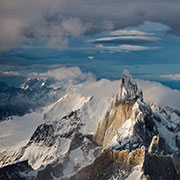
The fourth consecutive season with
fairly poor weather and conditions.
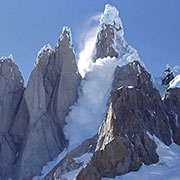
The first mushroom above the head-
wall on the Ragni Route collapsed,
causing an avalanche that would have
killed anyone on route.
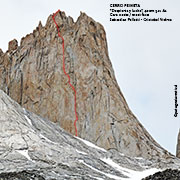
Cerro Peineta - Torres del Paine.
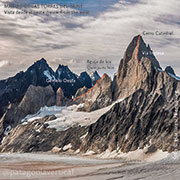
Gemelo Oeste - Torres del Paine.
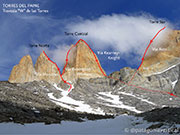
The "W" traverse - Torres del Paine.
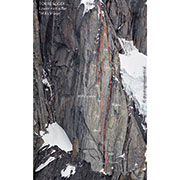
Torre Egger - east face, MA's Vision.
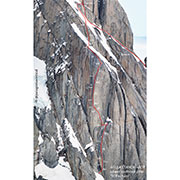
Standhardt - east face, El Flechazo.
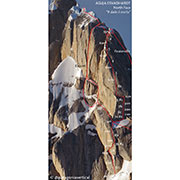
Standhardt - north, Il dado e tratto.
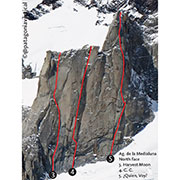
Aguja de la Medialuna, north face.
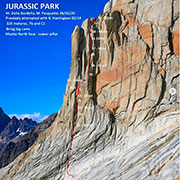
Mocho, north face, Jurassic Park.
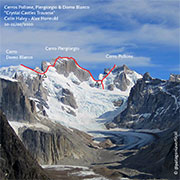
The Crystal Castles Traverse.
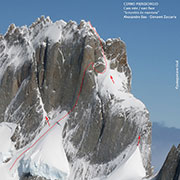
Cerro Piergiorgio, east face
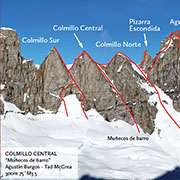
Colmillo Central, east face.
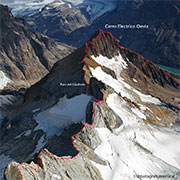
Cerro Electrico Oeste traverse.
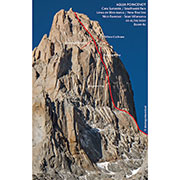
Poincenot, southwest face.
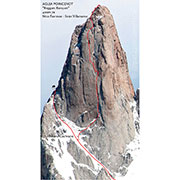
Poincenot E face, Beggars Banquet.
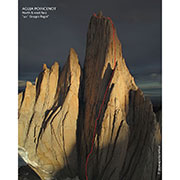
Poincenot, 40˚ Gruppo Ragni.
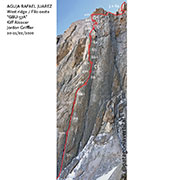
Rafael Juarez - GBU-57A
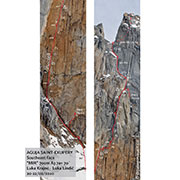
Aguja Saint-Exúpery, Mir, topo.
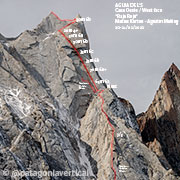
Ag. De l'S, Línea Roja.
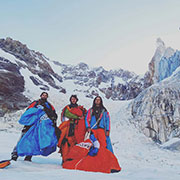
The "Taiga Boys", Co. Torre BASE.

Exit points on D'lS and Mojón Rojo.
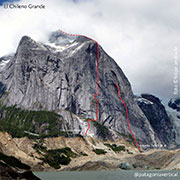
El Chileno Grande.
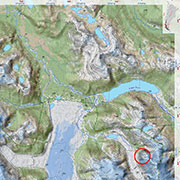
El Chileno Grande, location.
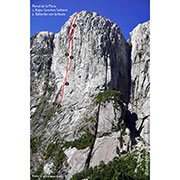
Cerro de la Plata lines.
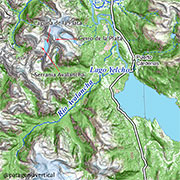
Cerro de la Plata, location.
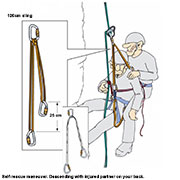
Learn to abseil with your partner on
your back.
|
|


























